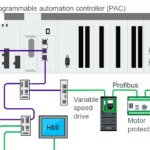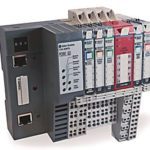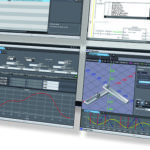By Steve Meyer || Data logging (and use of that data later) was once a complicated venture possible only through specialty hardware and applications — often in the form of standalone supervisory control and data acquisition or SCADA systems. Even new software and PC-based systems come at significant cost. In contrast, many of today’s programmable automation controllers (PACs) and even many PLCs include built-in data logging, storage, and networking functions. These let users collect and access this output through connections such as an Ethernet network or (as we’ll explore here) the ubiquitous USB mass-storage devices we call flash drives, pen drives, or thumb drives.
As the name implies, a USB data-logging port provides a means of storing data from a system using removable memory in the form of flash drives. USB ports provide inexpensive and (in most cases) secure means of moving data without broadcasting information over a network.

Such memory is self-contained and removable, so doesn’t involve any hardware resources within the controller beyond the port control function itself. In addition, flash drives can store controller programming to serve as a backup for existing programs — or as an upgrade if there are project changes needing implementation. Typical data-logging flash drives include a processor with memory to function as an intelligent peripheral — so can upload data and programs to the controller without a laptop.
For applications needing small size and convenience, there are now USB drives with enough onboard intelligence to operate full data-gathering devices for analog data storage of all kinds. Some USB drives are preconfigured to read signals from thermocouples and other temperature, pressure, humidity, current, and chemical sensors outputting 4-to-20-mA current-loop values. These drives are easy to configure for the number of readings to be taken and the time scale to be used. Such setups eliminate data-acquisition hardware where only a single of few channels of data are required. The memory format’s small size maximizes portability and ease of use in remote locations.
More complex applications generating multi-channel data (acquired through a PAC or other data-acquisition system) can store it on a USB drive. There’s typically less data within any given timeframe, as there are multiple channels. The convenience is that the data can then be sent or transported to a PAC for analysis as needed without concern for data-integrity loss.







Leave a Reply
You must be logged in to post a comment.